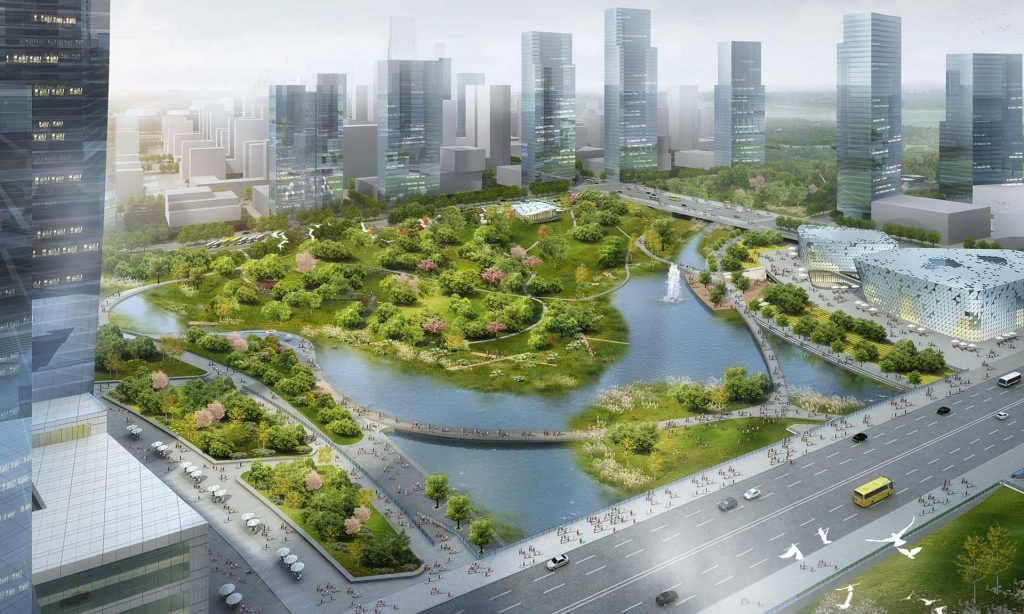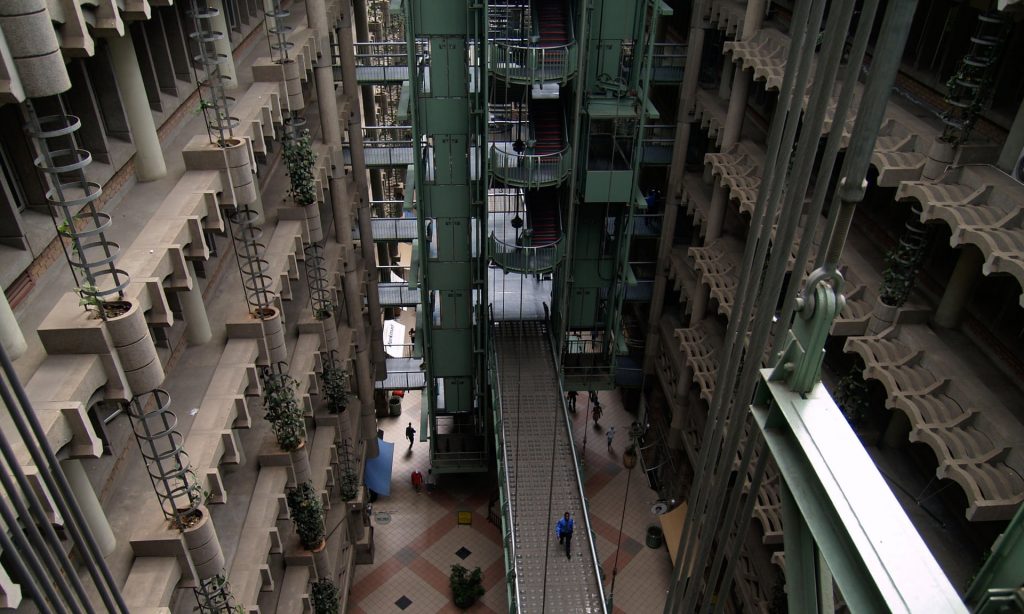Ludwig Luz
While global greenhouse emissions and raw material consumption continues to rise, cities around the world are ”racing to declare themselves smart” (3). Sensors, big data and ever-present cameras are apparently bound to make our cities more efficient, safer and sustainable. We can build more resilient, sustainable and friendlier urban areas by using nature-based technologies.
It is no news that if everyone would live like swiss people, we would need almost three planets (4). Already today, we are exploiting the seabed (3) in search for more resources in order to satisfy our ever-growing demand of new products which are not manufactured embedded into a circular economy but rather end up in a landfill most likely located outside of Europe.
Despite all this, so called smart cities are desired which monitor “everyone and everything, from bins to bridges” (1) in order to make cities run smoothly. Nature-based technologies are thereby often overlooked, even though they “have worked for indigenous peoples for thousands of years, with no need for electronic sensors, computer servers or extra IT support.” (1)
Nature-based technologies in the context of urban landscapes include for example pavements which passively absorb rainwater, green roofs and terraced wetland parks (Figure 1) which not only defend cities against floods but also clean wastewater. The later cleans wastewater more efficiently than sewage-treatment while at the same time absorbing “a whole lot of carbon, nitrogen, sulphur and methane, and creating a fishing industry and fertile farmland.”(1)

Figure 89.1 – Wuhan, China is a ‘sponge city’ with features such as Xinyuexie Park, pictured, which is designed to flood during monsoon. Illustration: Obermeyer
These kind of technologies can also be found on a smaller scale; passively cooled buildings (Figure 2) resembling a termite mound, algae that control the influx of sun (and heat) into a building (which can afterwards be used to produce biogas) and simply a smart placed building which makes use of the different angles of sunrays throughout the year.

Figure 89.2 – The Eastgate building in Harare has no air-conditioning or heating, yet stays regulated all year round using a design inspired by indigenous Zimbabwean masonry and termite mounds. Photograph: Ken Wilson-Max/Alamy
These technologies do not only have to potential to rewild our cities, but they also make them more resilient since “conventional technology” ages fast. Systems that are state of the art today, might need to be replaced in a couple of years because they are outdated. Cities would constantly need to maintenance their “smartness” and be “exceedingly complex to manage, with all sorts of unpredictable vulnerabilities”. Failures often tend to happen at the most inconvenient times after all.
Besides that, “smart technology” is often simply not needed to tackle the challenges that we face. What we need “is the will, foresight and courage to use the best of the old ideas” according to Soshanna Sax (Dr. Saxe is an assistant professor of civil and mineral engineering at the University of Toronto)(2). We need to be able to live with less, to make use of what we have available to us without diminishing someone else’s ability to live and thrive on this planet. Ancient and indigenous people’s knowledge about how to adapt to the environment we are living in has to be considered when designing the urban areas of tomorrow.
In no case does this mean that there is no place for technology in the future. It does mean however, that we need to carefully ascertain the usefulness of “smart technology” and its implications to our life. This becomes especially important in the face of the very little time that we have for significantly reducing greenhouse gas emissions. The more grey energy a new technology causes, the smaller will be its contribution towards the Sustainable Development Goals and ultimately the livability of this planet.
References:
- https://www.theguardian.com/cities/2020/jan/15/the-case-for-making-low-tech-dumb-cities-instead-of-smart-ones
- https://www.nytimes.com/2019/07/16/opinion/smart-cities.html
- https://www.theguardian.com/environment/2020/jan/25/race-for-seabed-threat-to-oceans
- https://www.bfs.admin.ch/bfs/de/home/statistiken/nachhaltige-entwicklung/weitere-indikatoren-achhaltige-entwicklung/oekologischer-fussabdruck.html
Media Attributions
- Sponge City in Wuhan
- Eastgate Building in Harare